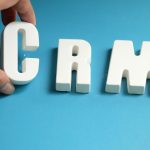
October 7,2021
Does Traditional Illustration have a future in Graphic Design
![]()
Has something been lost?
In today’s standings, graphic design and graphic illustration have far surpassed traditional illustration in terms of popularity and prevalence. Where there was once a piece of paper and a pencil (or fineliner pen), is now a Mac, with Adobe creative suite or any other variety of design programs. But, surely, the rise of technology does not make the pen obsolete.
Sure, the pen and pencil are still used in the development stages of graphic design, to sketch out initial ideas, but that’s usually where hand rendered work ends. The rough edges are ironed out into vectors and a certain degree of personality could be lost.

How to bring quirk into design

The idea of graphic design is to communicate to a target audience in the most effective and efficient ways possibly. That doesn’t mean there can be no rough edges left in the process, however. In fact, sometimes it can help. It can add a level of intrigue and quirk to something that would otherwise be straight edge and to the point.

Of course, some situations call for a straight edge approach but rarely would a brief be so rigid that no experimentation with traditional illustration could be explored. Personally, I would explore some form of hand-rendered illustration as part of any design brief, and that’s not simply just because it’s something I’m particularly good at 😉 but because it has the potential to add a whole new dimension to the work.

It can also open new roads when you’re coming to a dead end in a particular design, and break you out from a box that you may be trapped in.
Take Tobias Hall for example
A strong example for the use of traditional illustration in graphic design is Tobias Hall, a self proclaimed Conceptual Illustrator whose works almost exclusively have some degree of hand rendered work incorporated. Where a lot of graphic designers would use hand rendered sketches as a initial jumping off point, to later recreate them as computer generated images, Hall will refine his illustrations down to a point where he can scan them and simply colour them and that would be his final outcome (seen in the examples below).

As you can see there is a visible ruggedness to this illustrated work, and is reminiscent of late 19th / early 20th century style design. In a world that has been taken over by computer based design, it’s refreshing to see someone so committed to keeping traditional illustration alive in modern design.
There are examples of Halls work that aren’t as rugged and are more in tune with current design trends (which you can find on his website), but there is always a degree of ruggedness to them. His works very rarely include any stock typefaces and are almost all made from bespoke hand rendered letters.
Of course I am speaking of an idealistic world, where everything can be perfect and everyone can be happy. There are steps that can be taken on the ground floor to make it closer to this design and illustration utopia.
Whereas a typical design process may look like this:
- Briefing
- Research
- Initial design sketches
- Digital Development
- Refinement
- Production
There’s no reason sketching couldn’t be continued throughout the process, to keep illustration in mind and as at least a small part considered within a design. It can be as small as a hand rendered texture that can be incorporated or as big as a full illustration that could play a major role in the overall design.
Obviously what works, works and I’m not saying without traditional illustration graphic design can’t work. There is a reason Illustration has become a growing trend in graphic design in the past few years. It’s such a rich resource that anyone can use to add that extra something to their work. I hope to see more risks being taken by designers and illustrators alike in the future, and will be an advocate for the collaboration of both disciplines and personally include it in my work where I can.
If you need help with your upcoming illustration project, then let isev add some quirk to your brand. Get in touch to speak with one of our experts.




